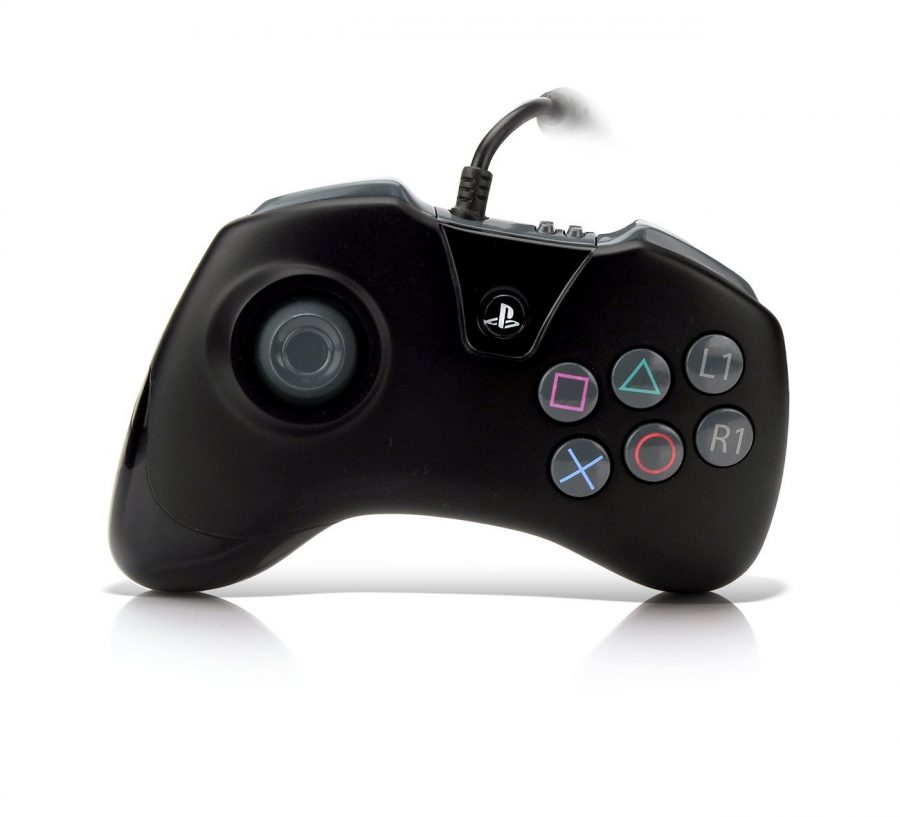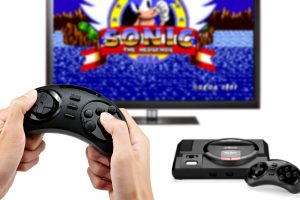I bought the PDP PS3 Versus Controller specifically to use with the Retro Freak console from Cyber Gadget that I reviewed here, although this can of course be used with an actual PlayStation 3, PC, or other devices that can utilize standard USB controllers. As you’ll note from the Retro Freak review, while I really liked the overall console hardware, I wasn’t totally enamored with the quality of the included Super NES-like controller and, while I don’t mind using a standard first party Sony PS3 controller, I was looking for something a bit more purpose-built (the Retro Freak doesn’t make use of analog sticks, for instance).

The front of the box.

The back of the box.
The packaging is interesting in that you can access the d-pad and buttons. It’s very clicky, very noisy, and does this fan of mechanical keyboards proud. The d-pad is a bit like an analog stick, very loose, but very clicky; as a result, it moves extremely easily. The buttons are also super sensitive to presses.

The inside of the box.
Setup on the Retro Freak was relatively straightforward. It saw the controller as a standard USB controller and then it was just a matter of mapping the buttons with a custom profile in each of the supported systems.

The front of the controller.
Unfortunately, while it’s a pretty nice controller, it’s not necessarily something I’d recommend for classic console games like you play on the Retro Freak. The feel of the controller is unique in a way that really doesn’t make it quite as versatile as a more traditional plus-style d-pad and non-microswitch button design. In fact, while I like the responsiveness of the unique d-pad, the buttons, while sufficiently reactive, have an odd feel, making super fast button presses a bit of a sloppier experience than I usually like.

The rear of the controller. It has a nice, tacky surface on the back.
Some additional information came to light in regards to the Retro Freak both from my own experimentation and in my discussions with other owners. It seems that Sega SG-1000 support is not yet implemented, which might be why the Retro Freak Gear Converter is delayed into next month (when mine arrives, I’ll post a review). Presumably a firmware update will be available by then to make both adapted cartridges and regular ROMs work.
I also confirmed that the Retro Freak Controller Adapter can be loaded up with legacy controllers on all of its available ports, with each registering individually on the console. It also works perfectly well on a PC (I tested in Windows 10), with each port registering as its own USB controller (although they’re all generically labeled the same, so you’ll need to figure out which controller port goes to the specific controller or controllers you have plugged in).
Finally, I actually got a wireless controller to work on the Retro Freak, albeit with some caveats. I had a second generation OnLive controller, which was different from the first generation OnLive controller in that the first generation only works with the now-defunct OnLive console, while the second generation OnLive controller is more of a generic Bluetooth controller. I plugged in the wireless USB dongle into the Retro Freak and the controller was immediately controlling the menus. Even the left analog stick worked, although use of it in a game caused malfunction. Unfortunately, in the case of button mapping (it has a SNES-style button layout, with two shoulder bumpers and two shoulder triggers), not all of the buttons work correctly, so it doesn’t really work right for games that require more than three buttons, and really is only ideal for two button games because of what buttons work properly with that layout. It’s a pity, but at least it shows that some type of wireless solution should be possible at some point, and maybe one even exists already.






 Your total news and information resource for all things Science, Technology, Engineering / Mathematics, Art, and Medicine / Health.
Your total news and information resource for all things Science, Technology, Engineering / Mathematics, Art, and Medicine / Health.
Leave a Comment